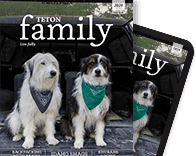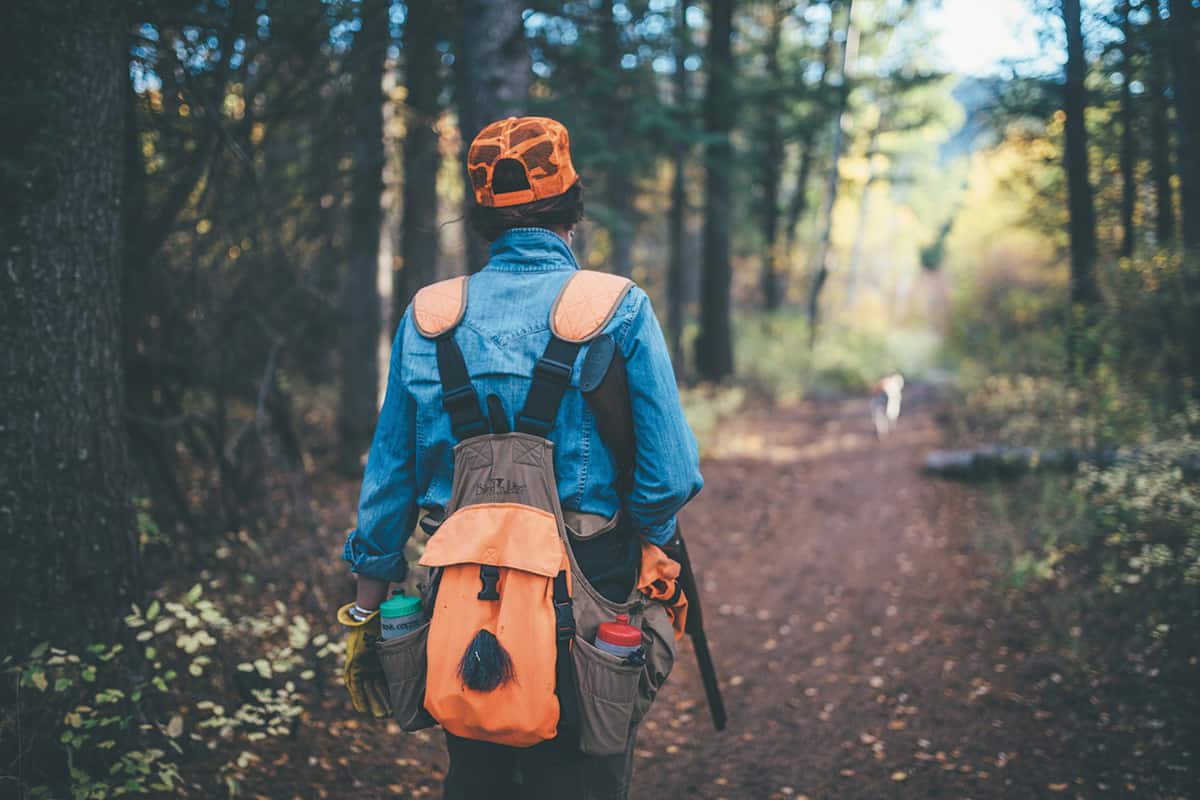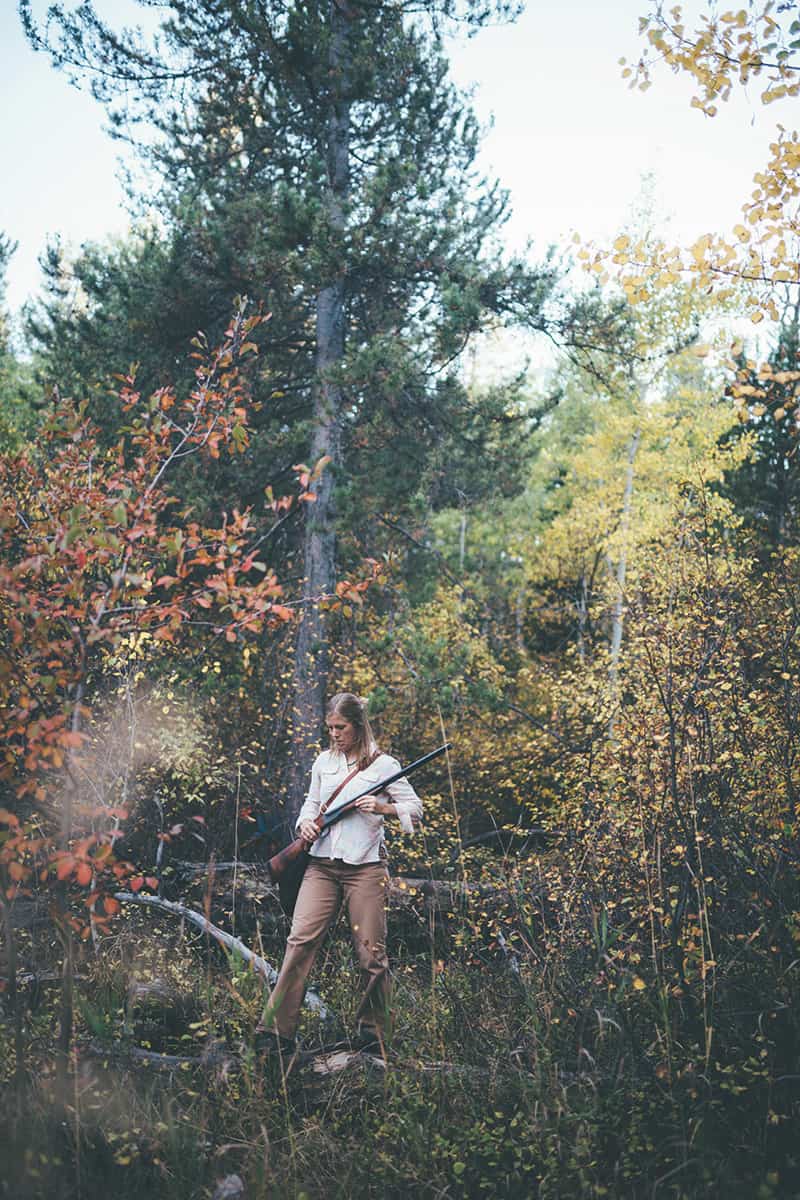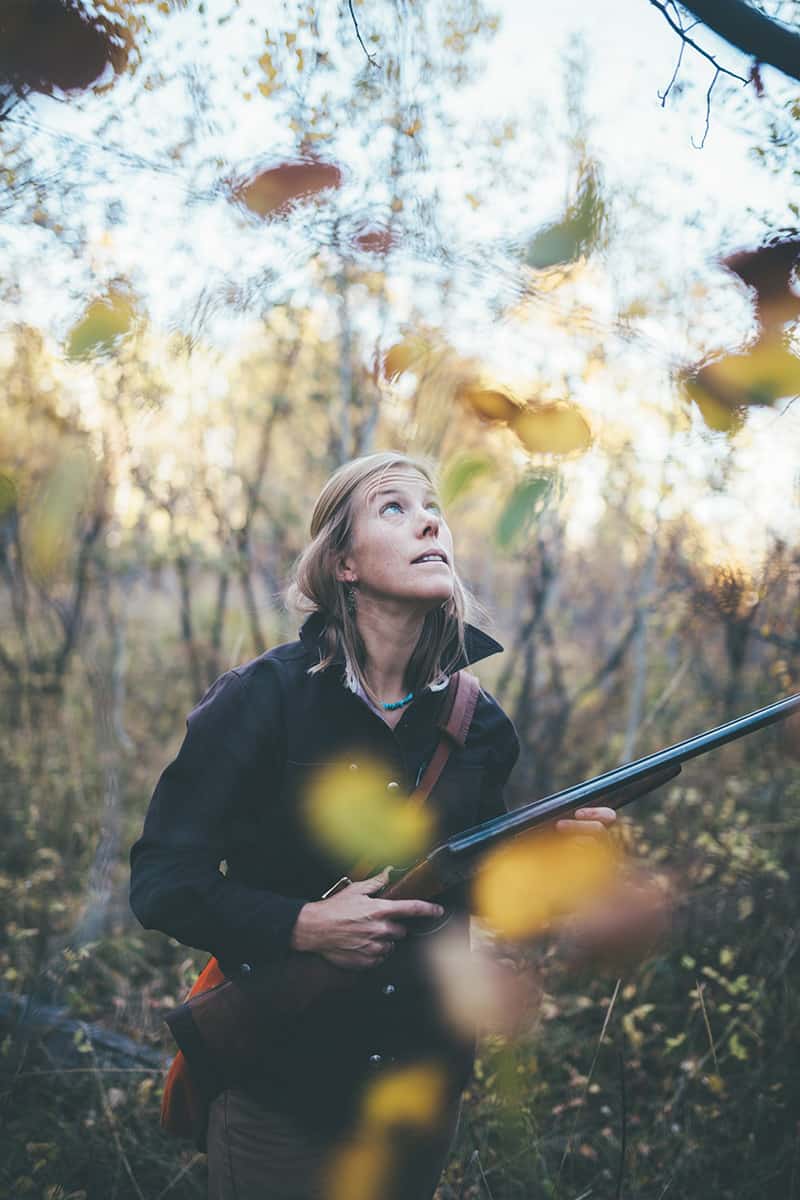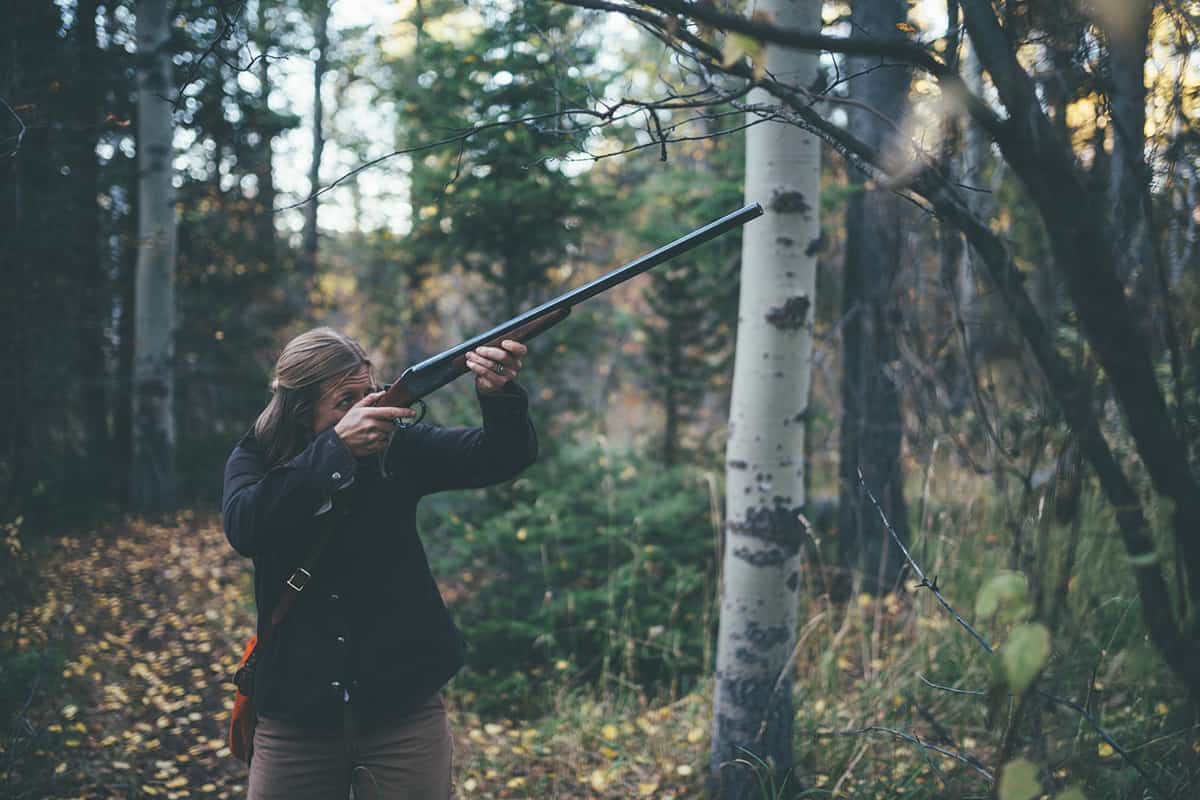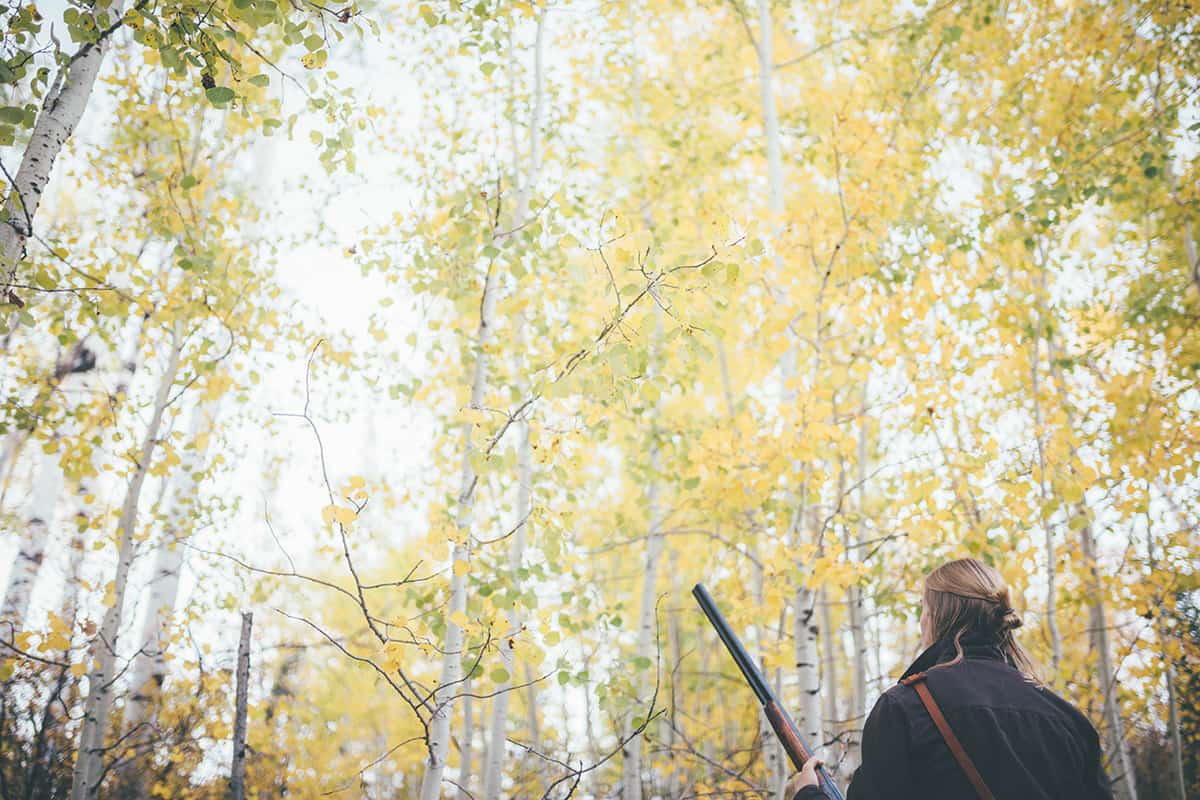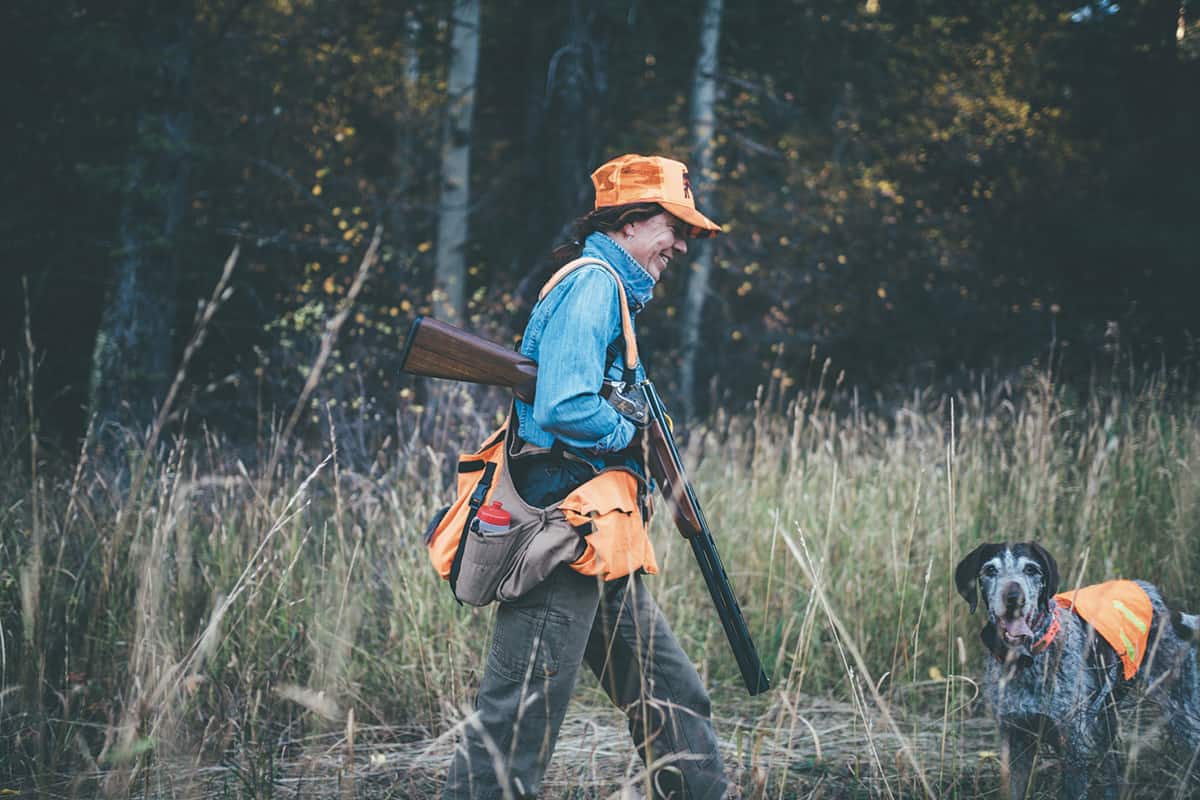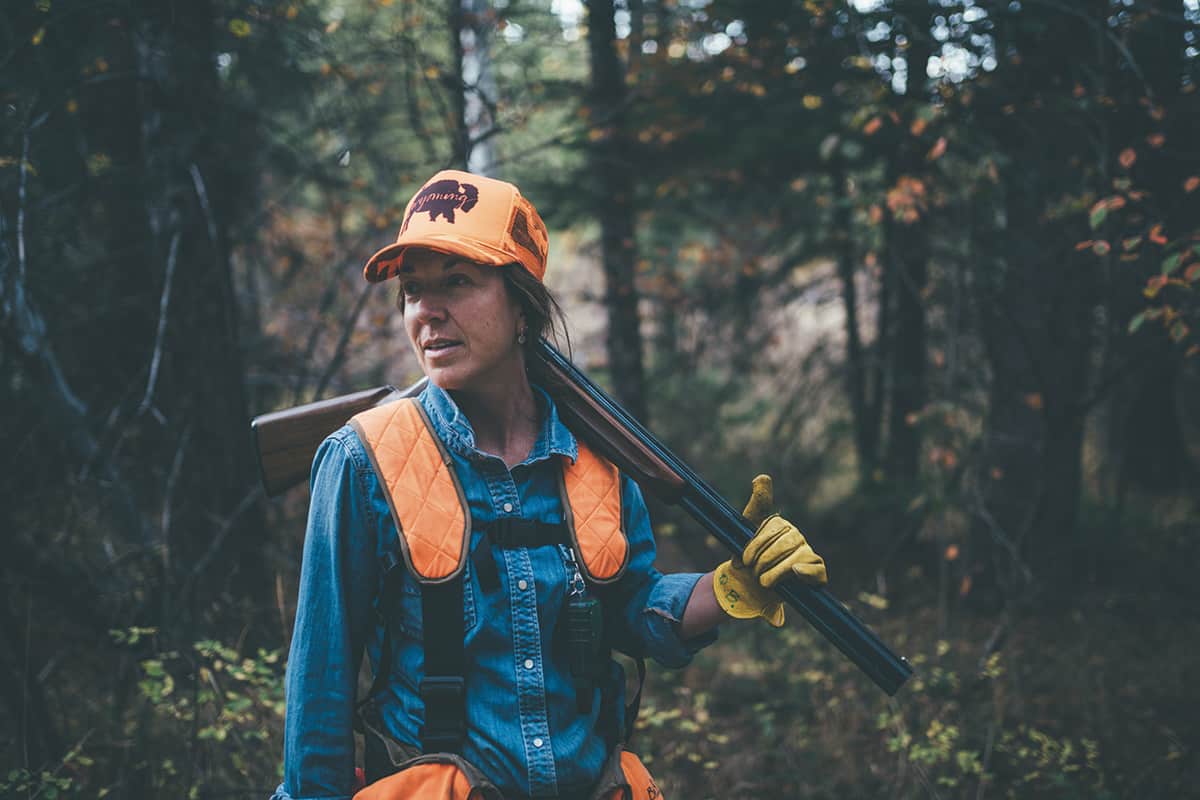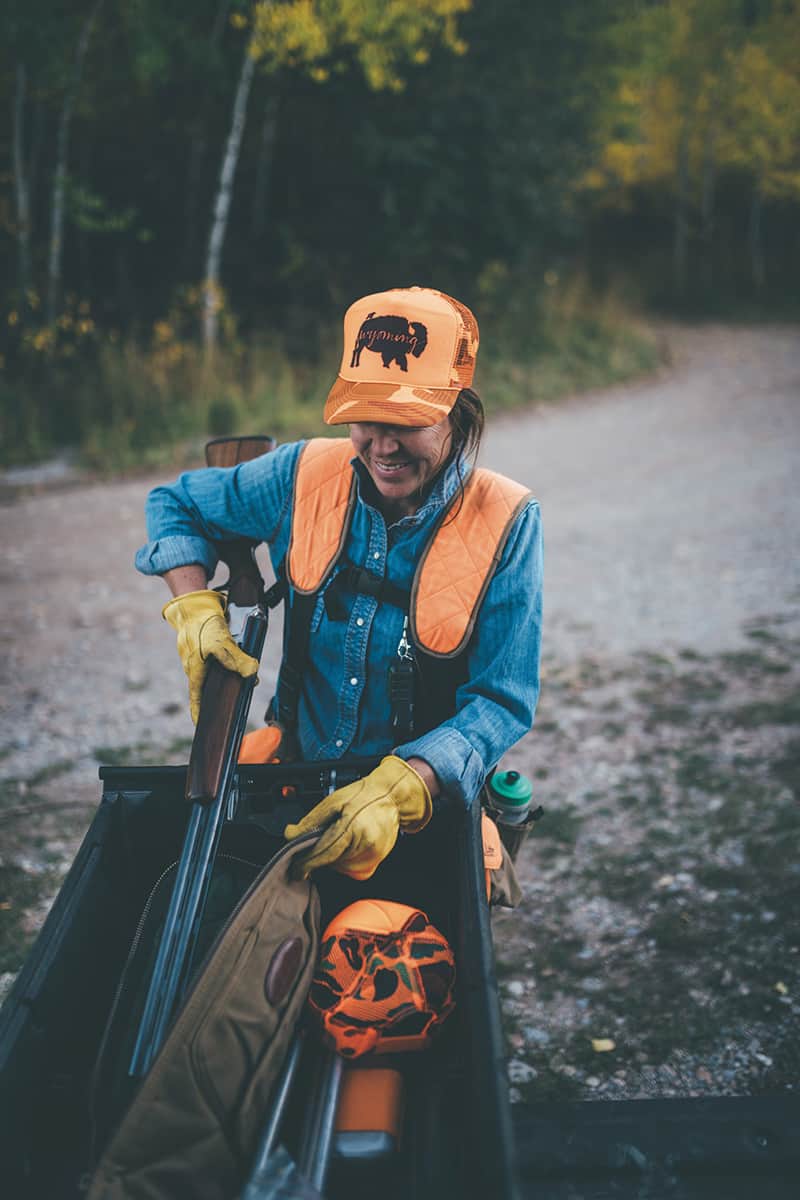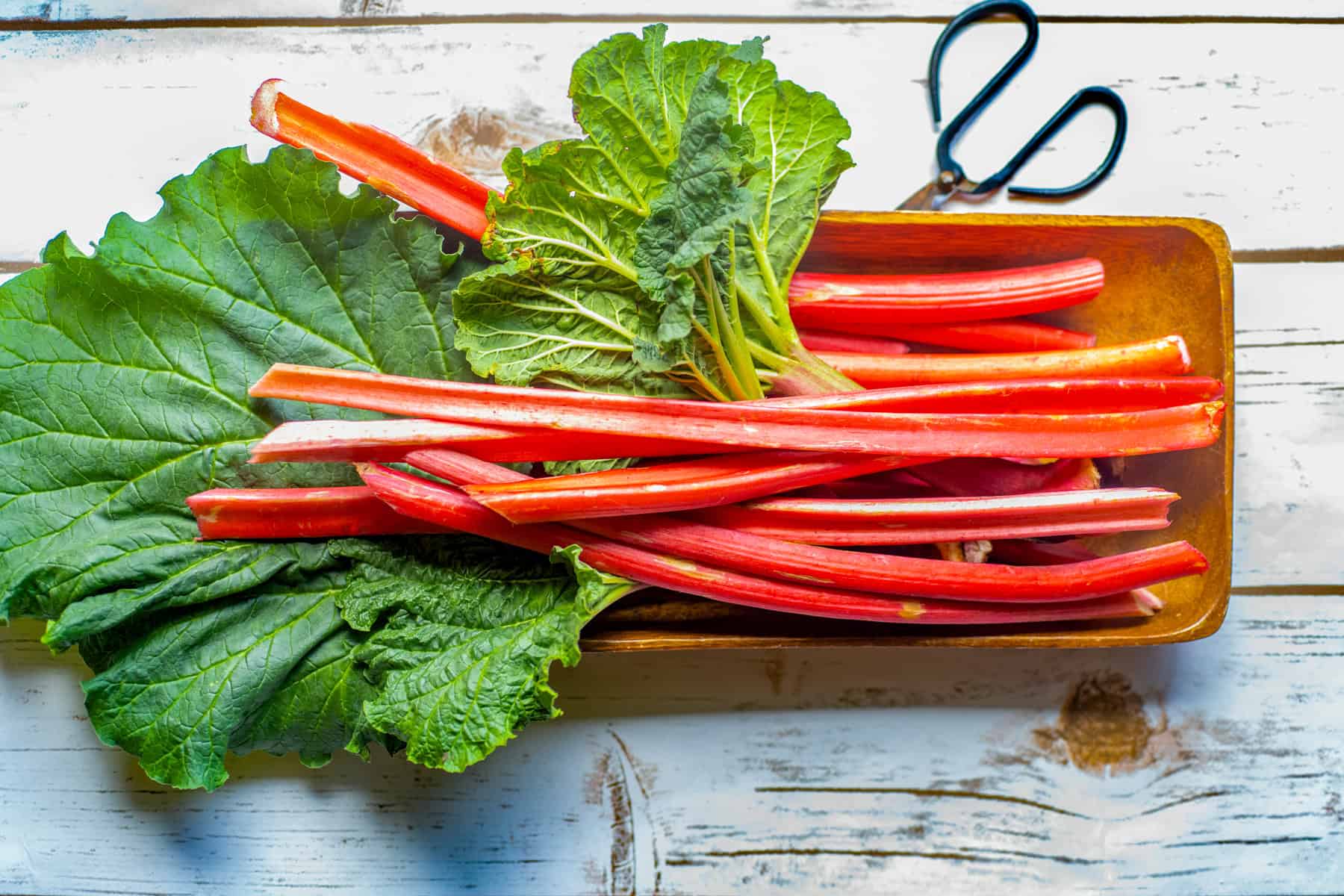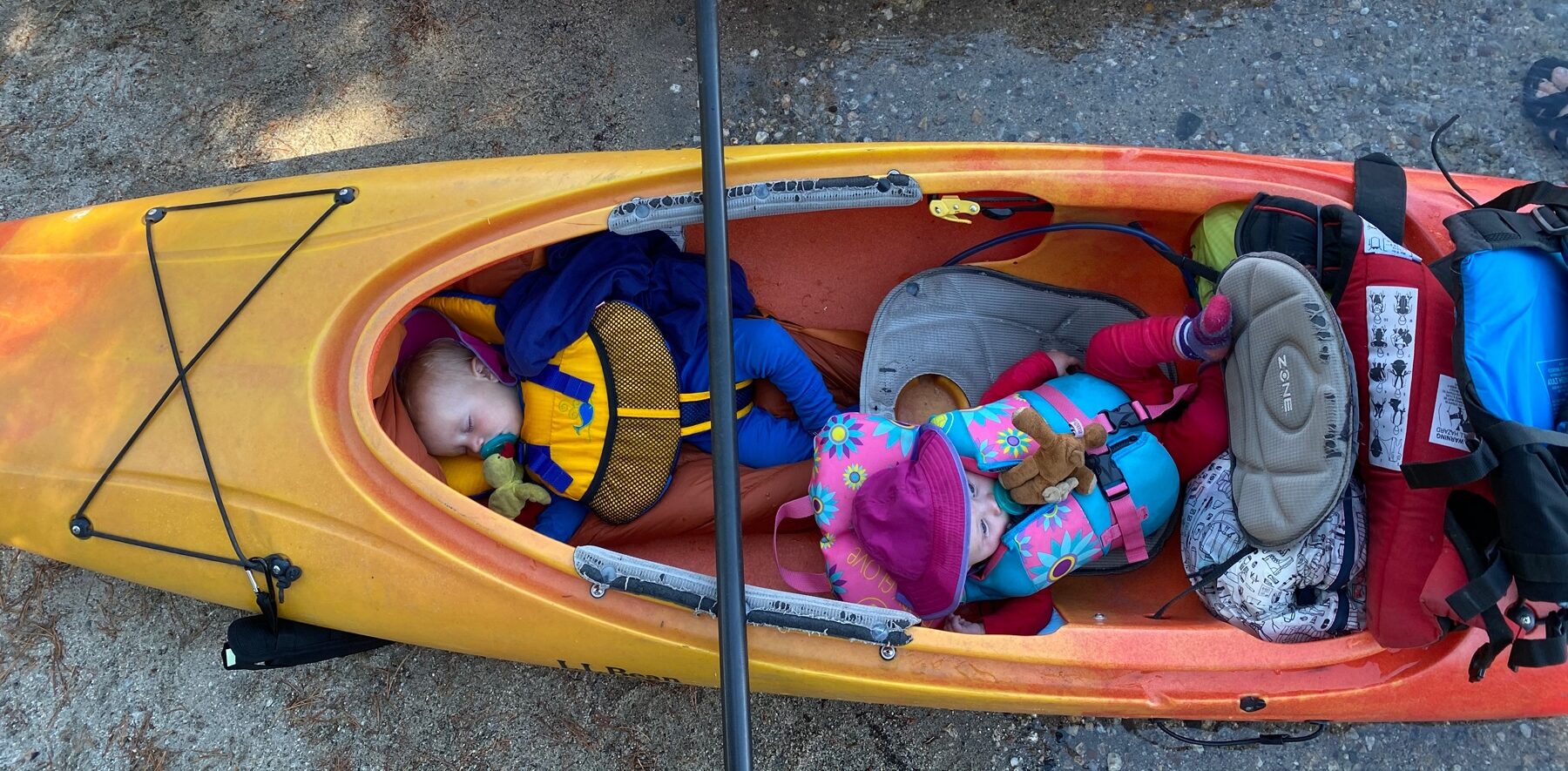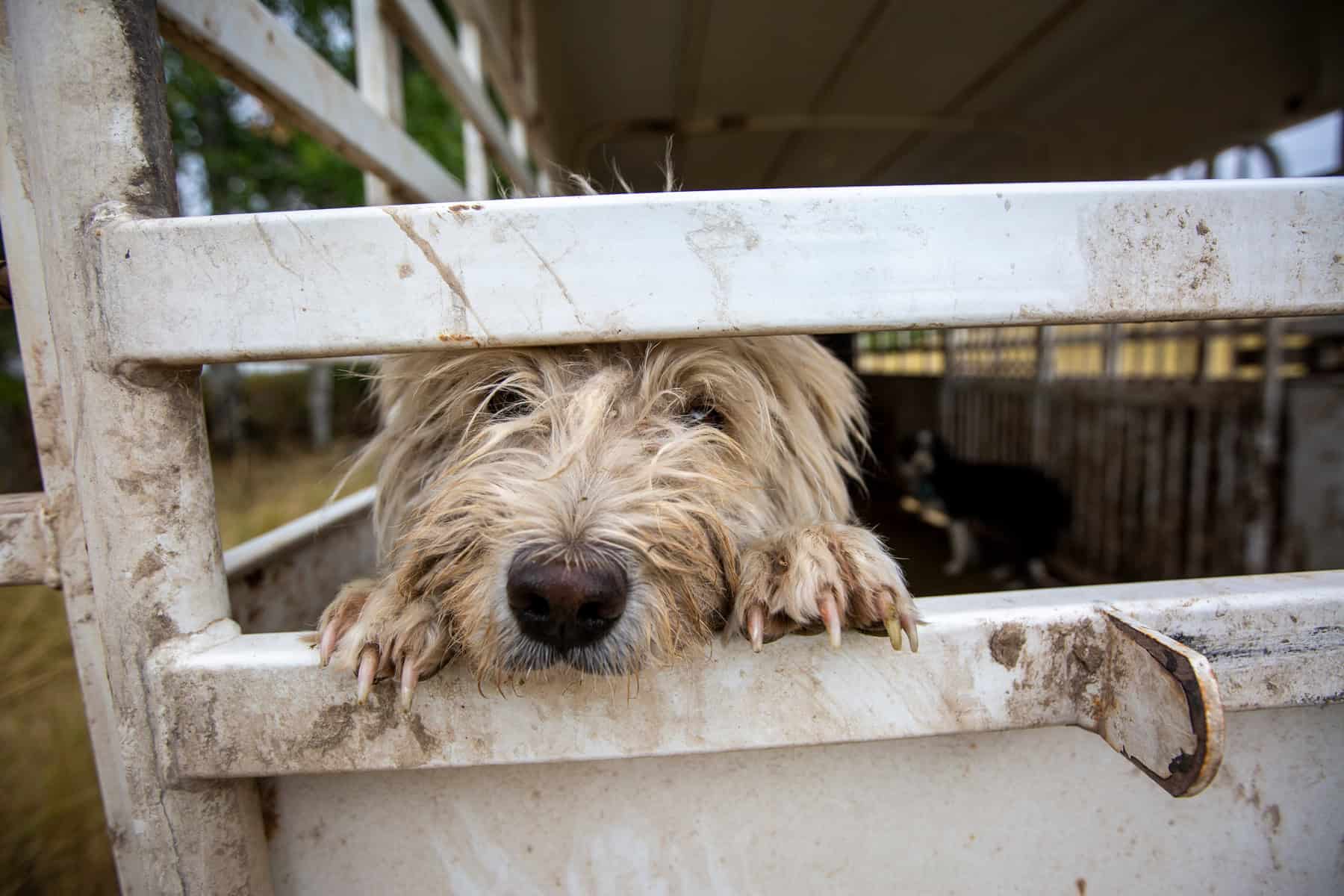By Christina Shepherd McGuire
Photographs by Camrin Dengel
–
The steel barrel glistens in the golden light of the setting sun up Horseshoe Canyon in the Big Hole Mountains. The smooth maple stock of the Franchi twenty-gauge shotgun has probably been polished to perfection by a recluse gunmaker in some high-mountain cabin (or so I imagine). To me, its retro look and intricate carvings deem it more a work of art than a tool of sustenance.
“I sometimes get a bruise on my side boob,” says my friend, hunter, and year-round fishing guide, Quincy Becker, as she shows me how to position the butt of the shotgun at the forefront of my armpit. “Set your cheek on it and line the sight up with that dead tree over there,” she says.
“Shoot the tree?” I ask, trembling with nervous anticipation.
“Just shoot a branch.”
And so I bend my knees, as if in some type of awkward snowboard stance, lean forward, and just go for it. The shot rings out through the valley, and I choke back unexpected tears, trying to act like a tough guy. Needless to say, my shot doesn’t go anywhere near the tree.
This isn’t the first time I cry while writing this article.
I basically bawl during my interview with Lynn Sherwood of Jackson Hole Shooting Experience and High Caliber Women as she recounts her lifelong fear of guns. And tears stream down my face while completely relating to Anna Lindstedt’s advice to parents on firearms: “We only ski, climb, or recreate with people we know and trust, and the same goes for hunting,” says Lindstedt, a hunter and mother to Ava, age three.
You see, I grew up seven miles from Sandy Hook Elementary School in Connecticut, and although that tragedy struck when I was more than fifteen years settled in the Mountain West, all I wanted to do was go home and help. Guns had become a part of my culture, and I felt guilty for it. But I was mad at suburban gun owners, housewives who took their kids to the shooting range, and our federal mental health policies, or lack thereof. But mostly, I was mad at a young man who had no respect for life, not even his own.
From far away I banned together with regional New Englanders committed to setting up a healing center for those involved in the tragedy. And even though I didn’t directly know the people affected, I felt like I at least did something. Those kids! Those families! Those teachers! But during that emotional outpouring of empathy, what I didn’t realize was that, as a mother, I needed to heal myself. And more importantly, I needed the tools to respectfully teach my children to honor firearms. So I enlisted the experts.
Guns For Food
Being an advocate for clean food, I secretly wish my husband were a hunter (note I say “my husband,” not “I”). How nice would it be to stock a freezer full of unprocessed, antibiotic- and nitrate-free meat from an animal that grazed solely on forest finds? But when I actually experience a bird hunt—in theory for food—I realize hunting isn’t only about getting your limit.
“I don’t feel like I have guns,“ Quincy says, as we sit on our respective tailgates after our aforementioned hunt. “I have this implement that I bring on hikes with the dogs. I could have a stick and probably kill as many grouse.”
Quincy, a Victor, Idaho, resident and Jackson native whose parents were vegetarian hippies from San Francisco, didn’t start hunting birds until she was twenty-eight. She went grouse hunting once with friends and was enamored by the way the dogs worked, the beautiful setting, and the shooting. “It’s very challenging to shoot the birds,” she says, chuckling at our lack of luck that evening. Quincy, who hunts ruffed grouse, sharp-tailed grouse, and ducks, does so for the clean source of nourishment. But for her, hunting is even more about the well-being of her dogs, Max and Scrub, who were bred to locate birds, point, and retrieve them once they are shot. “It’s very primal,” she says, “and it’s a release to focus solely on hunting. It’s meditative. It’s my yoga.”
Similarly, bird hunter Anna Lindstedt, who grew up fishing, sees guns as a tool—partly for sustenance and partly for recreation. She had never touched a gun until she moved to Teton Valley, Idaho, as an adult. Now married to Nick, a hunter, Lindstedt and her family not only enjoy the recreation that hunting allows, but also get to bask in its rewards. “When I take my gun and dog into the woods, sometimes we just end up going for a walk and not a single shot is fired,” Lindstedt says. “While shooting a gun is more consequential than picking up a fishing rod, a hook, and a line, I see the purpose as much the same. It is a tool with which we are going out to enjoy the outdoors and be appreciative of its beauty and [sometimes] its bounty.”
Hunting has always been part of the territory for Victor resident Kimberly Mills. Growing up in rural northwestern Connecticut, her single dad supplemented their food supply with venison. She would accompany her father every weekend to the shooting range, where he’d practice his archery and gun skills. Today, Mills hunts elk with a compound bow and shot a bull elk at twelve yards out the week before our interview.
While the art of hunting is her passion, Mills is equally concerned with the food she’s feeding her family, which includes her husband, Jay, and four-year-old son, Dillon. “We eat elk meat twice a week. It’s important that it’s organic and lean, and not full of antibiotics,” Mills says. She wants her son to grow up with the knowledge of the food cycle and educates him through example. “The meat we eat, we harvested,” she explains. “We didn’t buy it in the grocery store in a Styrofoam container with plastic wrap. We want Dillon to understand that there is a responsibility that comes with eating food.”
Lindstedt concurs, saying that her husband, Nick, has a deep respect for the big game animals he hunts. Nick performs a ritual before he field dresses his game, giving thanks to the animal for giving its life to nourish his family
Guns For Sport
Okay, so I get it. We reside slightly up the food chain from the bigger animals in our surroundings (thanks to our advanced intellect). But shooting for pleasure—when just one shot scared the hell out of me—isn’t a concept I can completely wrap my head around just yet.
“I was a city girl, and I had a lifelong fear of guns,” explains Sherwood, the owner of High Caliber Women in Jackson. “I was thirty-eight years old when it dawned on me that it wasn’t the gun that I was afraid of, it was the bad guy behind the gun.” So, terrified, she took a gun safety course and realized how empowering it was to move past her fear—an accomplishment that she wanted to share with others. So, in 2010, Sherwood and her husband, Shepard Humphries, opened Jackson Hole Shooting Experience, whose mission is to provide a luxury shooting experience with a focus on gun skill development. “We foster a healthy respect for the gun and what the individual behind it can do with it,” she says.
Sherwood’s ladies-only sister business, High Caliber Women, provides a safe haven for women and families to learn gun handling, self-defense, and prehunt skills. “Women come from a different place in their lives [than men]. We are media-biased, and sometimes react to the gun rather than the bad guys,” she explains. Furthermore, women learn differently. “We want to handle the gun without it being loaded first, to get that comfort level,” she adds.
And while you might paint a picture of her clientele in your mind, Sherwood can assure you the interest is varied. In the summertime, 95 percent of her business is from “upper-class, East Coast liberals” who approach the experience with a “what happens in Jackson stays in Jackson” mindset. And then there’s the seventy-two-year-old woman from California who trains on High Caliber Women’s dynamic tactical course, which helps teach muscle memory and forethought. As for the competitors, well, “It’s supergratifying to hear the plink of the target,” Sherwood says.
“Competition is both satisfying and physical.” For Sherwood, competition has also given her the confidence to turn a fear into a hobby and living, one that offers a unique and supportive environment to others wanting to foster shooting skills.
Family Gun Safety
So this is where I am stuck. I have a boy who loves Nerf guns. I allow him to own them and play with them, but he faces the consequence of the guns being taken away should he point them at a person or family pet. Still, I have friends who don’t allow gunplay and others whose children responsibly practice with real guns. I wonder: What teaching is right? When should we start? And how do nongun owners teach the difference between play and the real thing?
Sherwood believes that firearm education should begin at a very early age and that the language used should be made contextually appropriate as kids grow older. Families come to her to learn gun safety, maybe because they have guns in the house, or because their children are going on a sleepover with someone who does. By familiarizing older children with the parts and functions of a gun, they become better equipped to safely handle one (or to not handle one at all) should they encounter a stray. It’s important for kids to have an instructional person whom they trust; this could be a parent, grandparent, instructor, or mentor.
Mills believes that the responsibility lies with parents to really get to know the parents of their kids’ friends: “We have friends that don’t hunt or own guns, but we’ve built a relationship with these people and they understand that we are responsible.” As a responsible gun owner with a toddler, Mills’ guns at home are always locked in a safe.
As for Quincy, well, her safety practices are as habitual as tying her shoes. As we hike down the trail, her disengaged gun hangs on her shoulder like a fifth appendage. When the dog is on point and she is engaged, the faint sound of a dirt biker causes her to immediately disengage. “If I have any question, I just don’t shoot. I’m familiar with the trails and don’t shoot near them. And when I walk up to a hiker, I always disengage my gun,” she says. Additionally, she hangs bells on her dogs and wears her blaze-orange hat.
The journey I took with this article (and the evening walk in the woods with Quincy) helped me develop a healthy perspective on gun use—one that may differ from my suburb-residing friends, yet one that is shared, I believe, by most Teton families: “Shooting does not have to be about fear, and religion, and politics, and hunting, and conservation. It can be about fun,” Sherwood explains. ”As we change our communication about firearms, we alleviate some of the fear for the nonshooter.”
I can’t wait to go bird hunting again with Quincy; this time I’ll bring my ten-year-old daughter. To Olivia, it’s really about hiking in the woods and spending time with animals—all guns aside.
